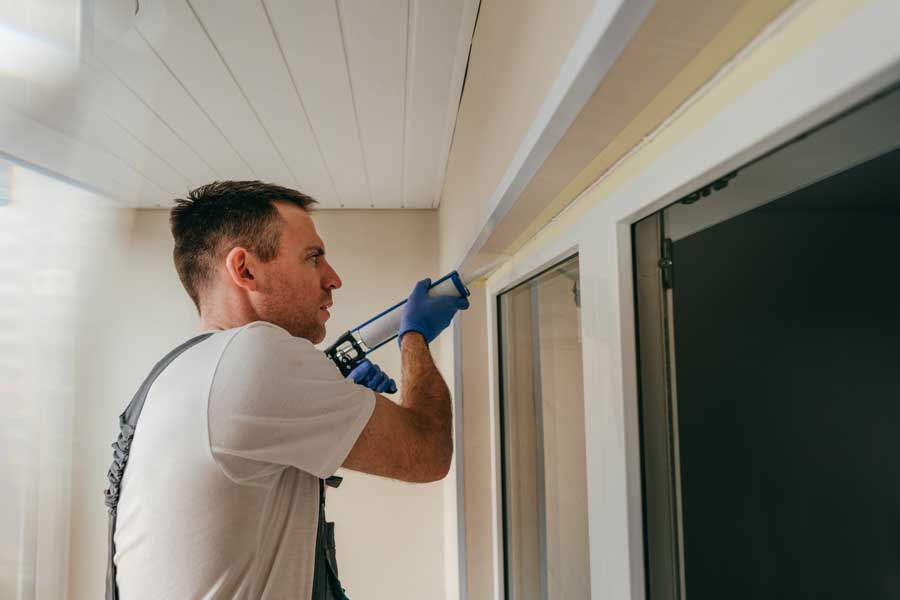Updated: 11/12/2024
As winter approaches, drafty rooms can turn a cozy home into a chilly experience, impacting both comfort and heating costs. Thankfully, fixing drafts doesn’t have to be expensive. In this guide, we’ll explore budget-friendly solutions to block drafts and retain heat in your home, making it warmer and more energy-efficient.
From simple DIY fixes to affordable upgrades, these methods will help you tackle those pesky drafts without breaking the bank.
| Topic | Key Points |
|---|---|
| Weather-Stripping Doors and Windows | Adding strips around doors and windows to prevent drafts |
| Sealing Gaps and Cracks | Identifying and filling in wall, floor, and ceiling gaps |
| Using Window Film and Curtains | Inexpensive ways to insulate windows from cold air |
| Draft Stoppers for Doors | Using draft blockers at the base of doors to block cold air |
Let’s start with one of the simplest and most effective fixes for drafts: weather-stripping doors and windows to seal out the cold.
Weather-Stripping for Doors and Windows
Weather-stripping is a low-cost solution that’s easy to install and highly effective in keeping out drafts. By adding strips around doors and windows, you create a barrier that prevents cold air from seeping in and warm air from escaping. Here’s how to make the most of weather-stripping:
- Types of Weather-Stripping: Choose from foam tape, V-strip, or door sweeps, each suited for different gaps and draft sources.
- Installation Tips: Clean the area first, measure carefully, and apply the strips along the edges of doors and windows to create a tight seal.
- Regular Check-Ups: Over time, weather-stripping can wear out. Make it a habit to check each fall and replace any worn-out sections.
Weather-stripping is a quick and effective way to tackle drafts, but for a thorough solution, it’s essential to address gaps and cracks in walls, floors, and ceilings.
Sealing Gaps and Cracks in Walls, Floors, and Ceilings
Beyond doors and windows, gaps and cracks in walls, floors, and ceilings are common culprits for drafts. Sealing these areas with caulk or spray foam insulation can have a big impact on indoor comfort without much cost. Here’s how to do it effectively:
- Identify Draft Sources: Use your hand to feel for cold air or a lit candle to detect drafts.
- Use Caulk for Small Gaps: Caulk is ideal for narrow cracks around baseboards, window frames, and walls.
- Expanding Foam for Larger Gaps: For bigger holes, such as those around pipes, expanding foam provides a more durable seal.
Sealing gaps not only prevents drafts but also adds to the energy efficiency of your home, making heating more effective. Once you’ve tackled the walls, adding insulation to windows is another effective step.
Adding Insulation with Window Film and Heavy Curtains
Windows are a major source of drafts, especially in older homes with single-pane glass. Adding window film or heavy curtains is a budget-friendly way to insulate your windows and keep the chill out. Here’s how to make it work:
- Window Film Kits: These kits are easy to apply and can add an extra layer of insulation that blocks cold air.
- Thermal Curtains: Heavy, insulated curtains add warmth and block drafts, and they come in various colors to match your decor.
- Layering for Extra Protection: For maximum warmth, combine window film with thermal curtains, which can further reduce heat loss.
Window film and curtains can help reduce drafts significantly, but for a truly draft-free experience, consider using door draft stoppers for those cold air gaps under doors.
Block Drafts Under Doors with Door Draft Stoppers
Draft stoppers are one of the simplest yet most effective tools for blocking drafts under doors. These are especially useful for exterior doors and interior doors that separate unheated spaces. Here’s how draft stoppers can help:
- Types of Draft Stoppers: Choose from fabric stoppers, which can be placed in front of the door, or attachable door sweeps that move with the door.
- DIY Options: For a cost-effective solution, make a DIY draft stopper using old fabric and stuffing.
- Best Placement: Ensure draft stoppers sit snugly against the door’s base to prevent cold air from slipping through.
Draft stoppers provide instant relief from cold air entering your rooms, especially when combined with other inexpensive fixes like weather-stripping and window insulation.
Weather-Stripping
Add strips around doors and windows to block drafts.
Seal Gaps & Cracks
Identify and fill gaps in walls, floors, and ceilings.
Window Film & Curtains
Use window film or heavy curtains to insulate windows.
Door Draft Stoppers
Place draft blockers at door bases to stop cold air.
Final Thoughts
Eliminating drafts doesn’t require a major investment—simple, budget-friendly solutions can go a long way. From weather-stripping and caulking gaps to adding window film and draft stoppers, these fixes will help keep your home warmer and more comfortable all winter. By taking these steps, you can create a cozier space and reduce heating costs.
For more tips on improving your home’s comfort, contact Dale HCS, your local Sonoma County HVAC experts. As a family-owned company, we’re dedicated to helping you find affordable solutions to keep your home warm and draft-free.

